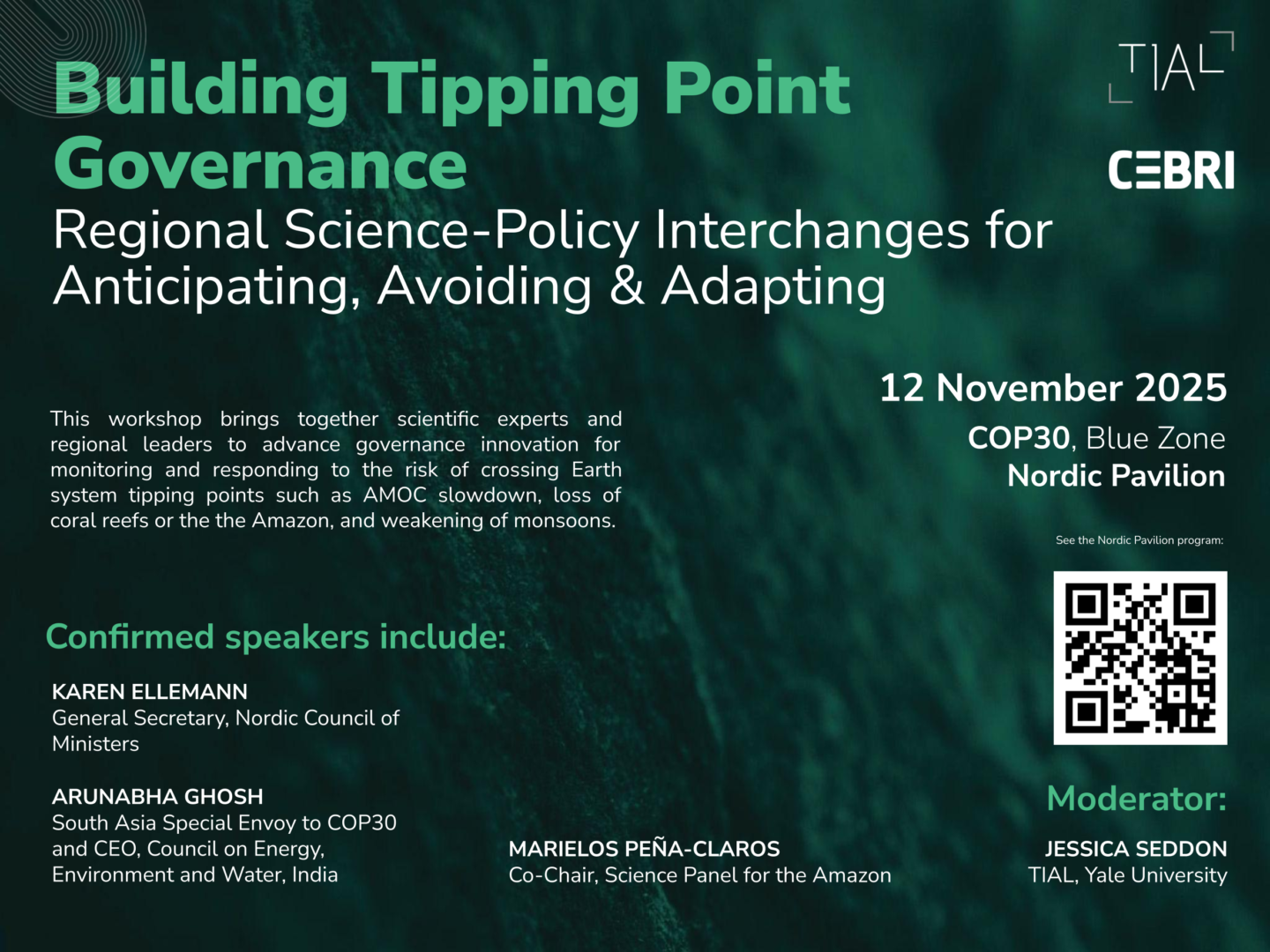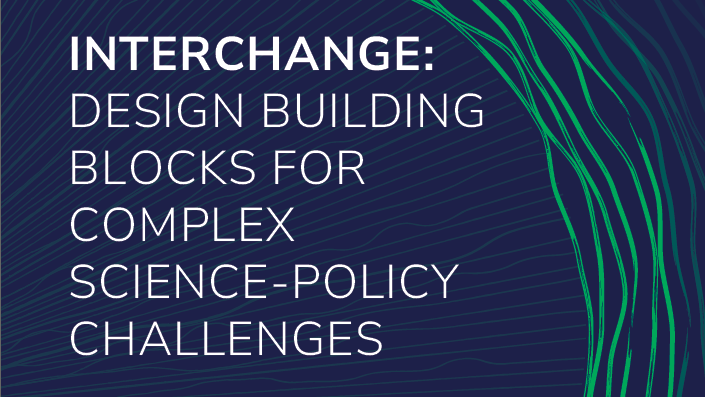TIAL’s “Tipping Element Interchange” project focuses on developing new institutional architectures capable of recognising and responding to nonlinear and cascading climate risks. The project has three parts: first, identifying the institutional architecture building blocks for generating knowledge and connecting it to the kinds of actions that are needed to both avoid and adapt to environmental change; second, identifying possible opportunity sites for upgrading or creating new institutions; and third, working with partners to initiate new and upgraded institutions.
We’ve moved along since June.
Our white paper summarizes our initial design framework for connecting knowledge with action to address complex emerging environmental, technological, and societal changes. Borrowed from architecture, an “interchange” describes a junction that allows different flows—of information, people, or resources—to meet and merge for new outcomes. Applied to institutional design, it provides a way to understand and build the connective infrastructure between scientific understanding and political authority.

The concept was first introduced at our kickoff meeting in Rio de Janeiro, where participants from science, policy, and the private sector used it to structure dialogue around gaps between knowing and doing. The framework helped participants visualise how science could interact with governance beyond one-way assessments. It also created a common vocabulary for discussing how institutions might be upgraded or newly created to reflect ecological interdependence.
Subsequent workshops, including a Convening on Sociobiodiversity organized by Instituto Serrapilheira and the Humboldt Institute and the Institutional Imagination Workshop in Brasília (co-organised with ENAP), further developed the Interchange idea. These sessions demonstrated how governance systems could more accurately represent nature’s dynamics and embed them within decision-making.
The Concept Note on Tipping Elements Monitoring and Response Facilities, published in October 2025 as part of the Global Tipping Points Report, outlines a specific application of Interchanges to develop the science and action capabilities to anticipate, mitigate, and adapt to a diverse set of potential Earth system changes.
We are excited to be running a session at the Nordic Pavilion at COP30 on priorities and possibilities for implementing TEMRFs. Join us on November 12, 9 am local time, if you will be in Belém. We’ll post the video for those who can’t make it.

Looking ahead, stay tuned for more in-depth co-creation in 2026. Our early geographic focus has been on the Amazon Basin and Atlantic Meridional Overturning Circulation (AMOC) but the approach is applicable for other regions that illustrate both the urgency and potential of coordinated institutional responses.
At its core, the project aims to test how institutions can detect emerging risks earlier, interpret them collectively, and respond more coherently. The approach is practical and iterative, rooted in identifying where collaboration can be made tangible across science, policy, private sector, and community action.
This project is supported through a dedicated grant from the Rockefeller Foundation.
Relevant resources:
White Paper #004: Interchange: Design building blocks for complex science-policy challenges
The “Interchnage” project: Toward an institutional architecture for representing, recognising, and responding to tipping elements
Featured image: Jukka Virkkunen, from a forthcoming TIAL white paper


